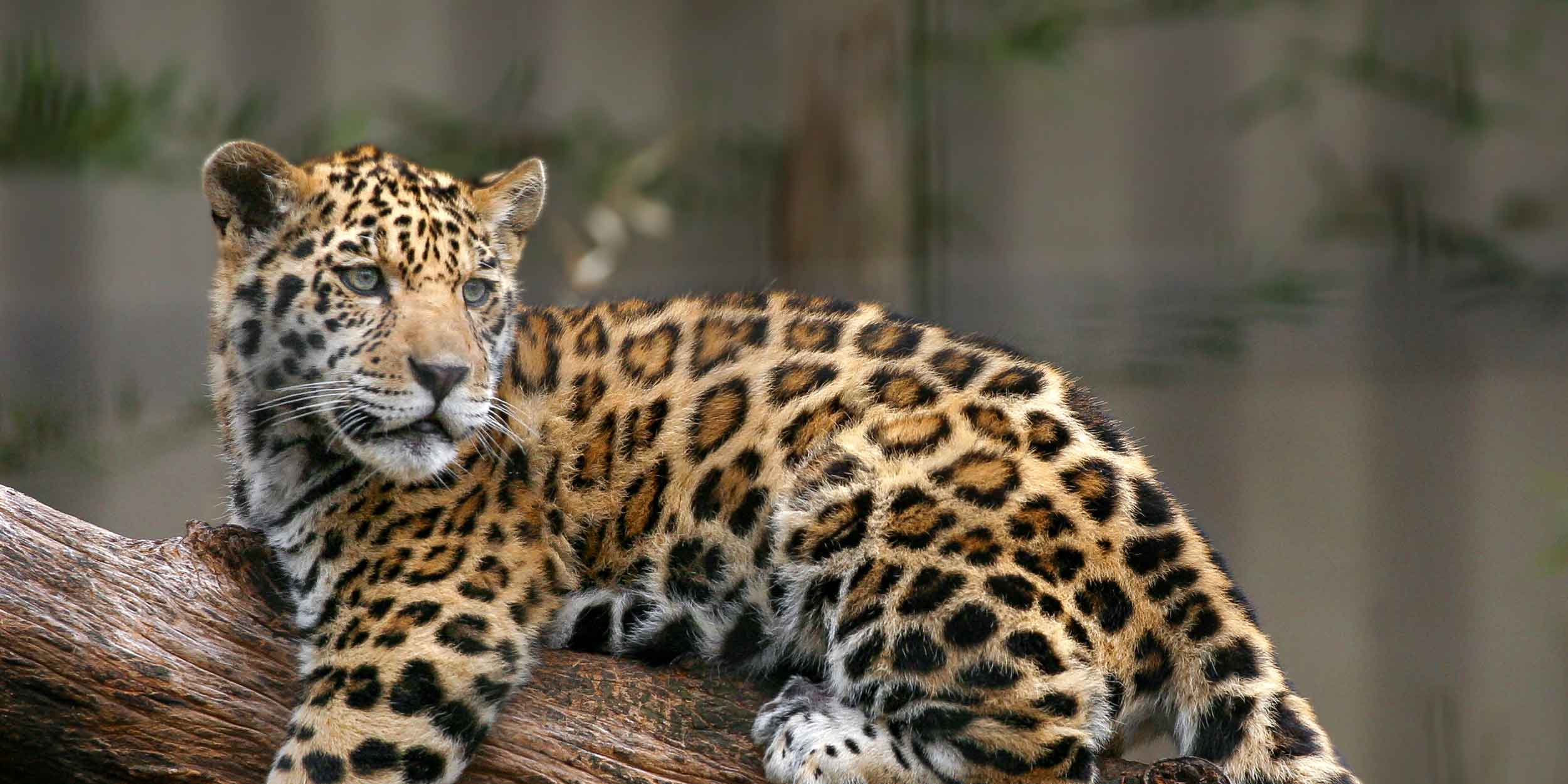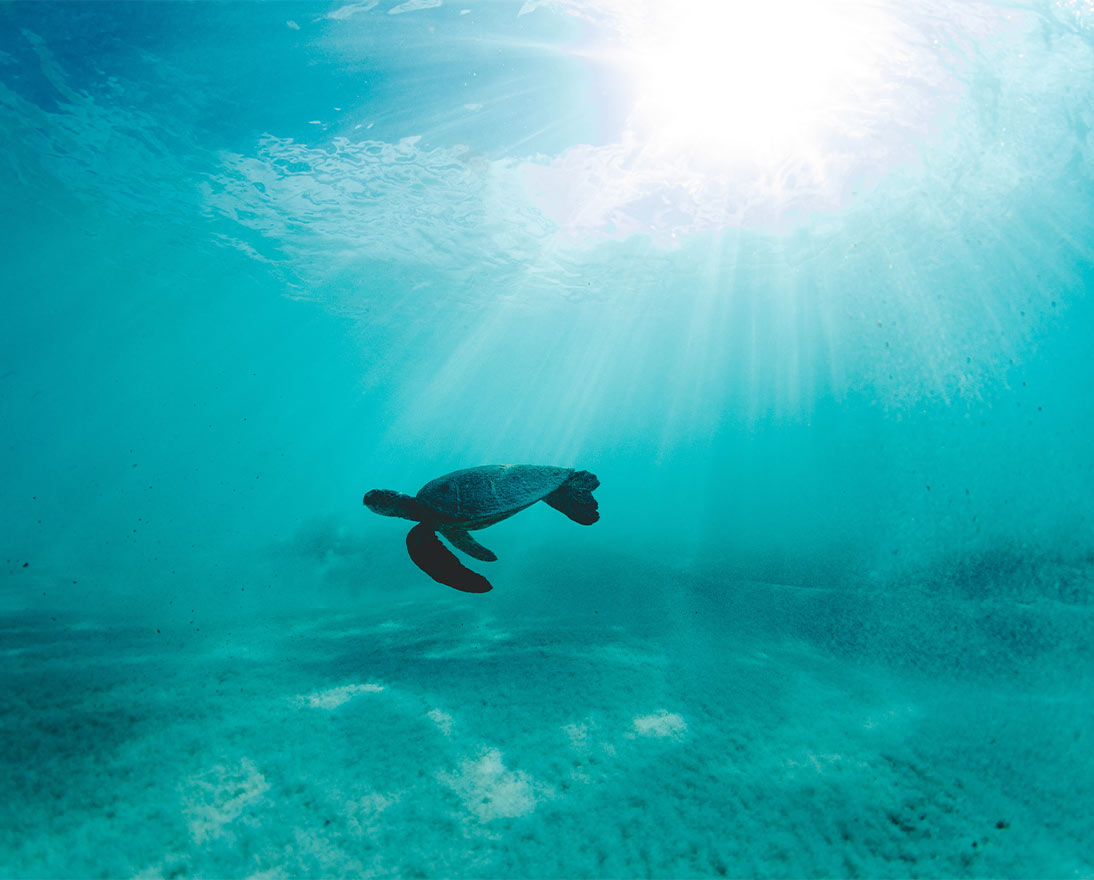Can we save the endangered jaguar from extinction?
BiodiversityArticleAugust 8, 20236 min read
The jaguar is “near threatened” and is locally extinct in some regions. But the elusive big cat is making a return thanks to a series of pioneering environmental projects to restore its natural habitat.
It may seem hard to believe, but jaguars once prowled the Americas as far north as Arizona and Texas. Today, the only way to see this large feline in the U.S. is to visit a zoo.
Jaguars continue to roam throughout Central and South America. But this beautiful and elusive big cat is listed as “near threatened” by the International Union for Conservation of Nature (IUCN). In some regions, the jaguar is already critically endangered or locally extinct.
Hunting, loss of prey, agricultural development and urban expansion throughout the 20th century led to mass population declines. In the 1960s, more than 15,000 jaguars were killed annually for their skins in the Brazilian Amazon Rainforest alone. Legal trade was banned in the 1970s, but illegal trade of bones and teeth – exported to Asia for traditional medicines – continues.
Habitat loss remains the biggest threat to its future. Jaguars prefer dense, undisturbed forests that allow them to stalk prey. As strong swimmers, these apex predators also like to live near swamps and rivers, away from human settlements and roads. But this habitat is under threat.
In Brazil’s Atlantic Forest, for instance, a 2016 biodiversity study found that 85 percent of the jaguar’s habitat had been lost and that only 7 percent remained in good condition. The Atlantic Forest follows Brazil’s eastern coastline – surrounding Brazil’s two pre-eminent cities, São Paulo and Rio de Janeiro – all the way down beyond its southern border into Paraguay. But it has been decimated by humans with only 11 to 16 percent of the original forest remaining.
Jaguars in the Atlantic Forest
The jaguar is the most high-profile victim of this destruction. The 2016 study estimated that fewer than 300 individual jaguars remained in the Atlantic Forest, scattered in small, isolated sub-populations where they were likely to suffer from a lack of genetic diversity due to inbreeding.
As Fabio Leonardo Tomas, an agronomist engineer at the Brazilian environmental organization Instituto Terra explains: “Jaguars, pumas and other feline mammals have been present in the Atlantic Forest since its evolution thousands of years ago. With the destruction of the forests, jaguars, along with many other animals, have largely been eradicated, leaving only a few survivors. A loss of the forest leads to a consequent loss of wildlife.”
If deforestation continues unchecked, the Atlantic Forest could become one of the first tropical forest eco-regions to lose its top predator. As well as driving the jaguar to extinction, this would also have a significant and unpredictable impact on the wider ecosystem: top predators, so-called keystone species, are influential in regulating the populations of species below them in the food chain. Without jaguars, species like deer, peccaries, and capybaras may overpopulate and potentially cause devastating impacts on vegetation and landscapes.
Restoring the jaguar’s habitat
Thankfully, the scale of the damage to the Atlantic Forest and the threat to its indigenous jaguar population has been widely recognized. The crisis inspired a group of companies, local producers, scientific researchers, charities and other social organizations to form the Atlantic Forest Restoration Pact (AFRP), which officially launched in 2009.
By combining their efforts and expertise in rainforest restoration and conservation, the AFRP aims to recover 15 million hectares (58,000 square miles) of the Atlantic Forest by 2050, an area approximately the size of Bangladesh. This joint initiative is already producing promising results and is estimated to have restored 1.4 million hectares (5,400 square miles), which is roughly the size of the U.S. state of Connecticut.
Instituto Terra, a non-profit founded in 1998 that now benefits from a sponsorship grant from Zurich Insurance Group, has been playing a leading role in the restoration efforts on a former cattle farm in Brazil’s Doce river valley, where it aims to restore biodiversity, protect the soil, and to revive and protect clean water sources.
“This area that was once overtaken by pasture and erosion has been replanted with more than 2.5 million native seedlings in the last two decades. The soil has recovered, and the water springs have returned,” explains Isabella Salton, Instituto Terra’s former executive director. Today, the reserve is a shelter for more than 172 different bird species, 15 species of amphibians, 16 species of reptiles and 33 species of mammals, many of which, like the jaguar, are endangered.
During replanting, the seedlings – which include some species to boost the rainforest’s initial recovery and others to increase its diversity – are deliberately dispersed in such a way as to recreate the patterns of a wild forest. The “recovery” species grow quickly to create a shady canopy beneath which more light-sensitive species can then develop and thrive.
“As we re-establish fragments of forest and increase the area that they cover,” Tomas says, “we increase the diversity of trees and notice that insects, fungi, and small mammals return once again to these environments. This increases the possibility of creating food for felines such as jaguars.”
Indeed, the return of jaguars to the area has been noticed by Instituto Terra’s own researchers, who have observed them while conducting fieldwork.
Hope for the jaguar
In total, Zurich’s support will lead to the planting of an additional 1 million seedlings over an eight-year period, covering a total area of 700 hectares (2.7 square miles). “Our aim is to help these forests become fully self-sustaining and biodiverse in the coming decades,” says Zurich’s Linda Freiner, Group Head of Sustainability. “This will create long-term habitats for endangered species such as the jaguar. There is still much work to be done but Instituto Terra is showing what can be achieved: given the right protection and support, a rainforest really can be reborn. Fighting the climate crisis means protecting forests and biodiversity.”
It is worryingly common to read news headlines lamenting the decline and loss of the world’s rainforests and the extraordinary wildlife they contain. The situation today is by no means rosy, but the recent regeneration of the Atlantic Forest shows that even in the bleakest scenarios, renewal is possible. In the opinion of Will Baldwin-Cantello, the Director of Nature-Based Solutions at the World Wildlife Foundation: “The Atlantic Forest is probably one of the strongest beacons we have when it comes to forest restoration.”


